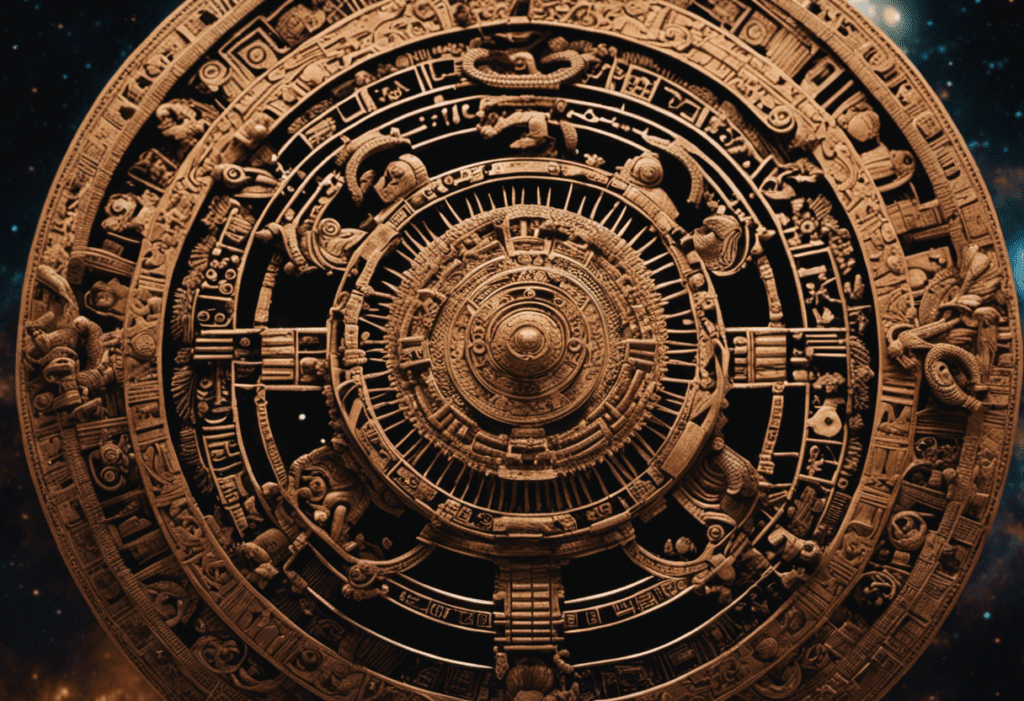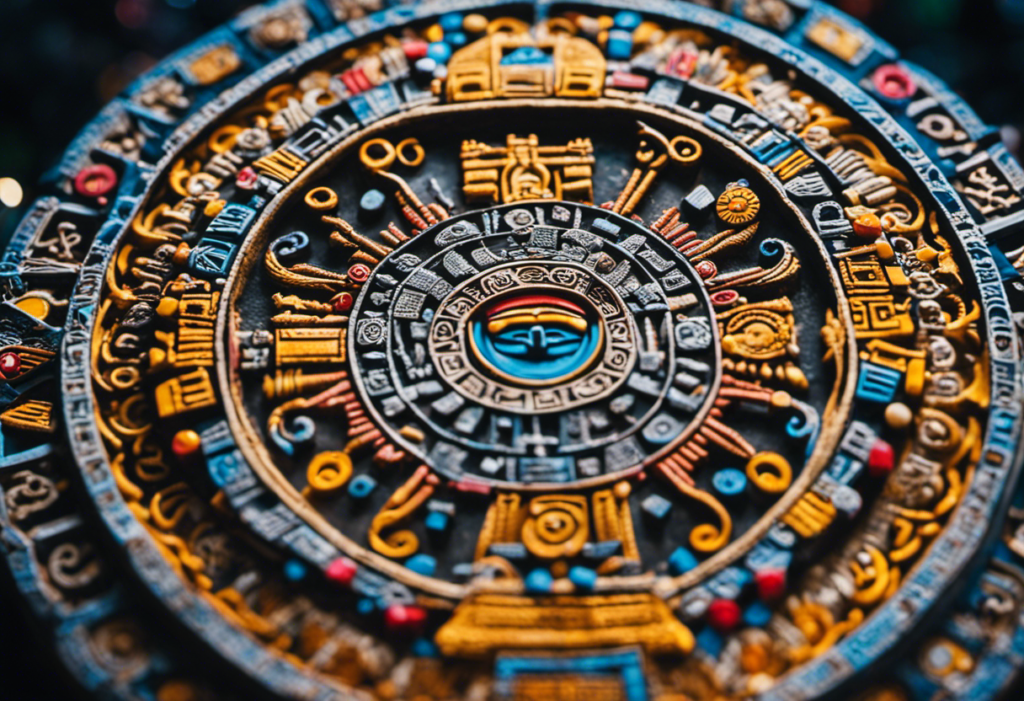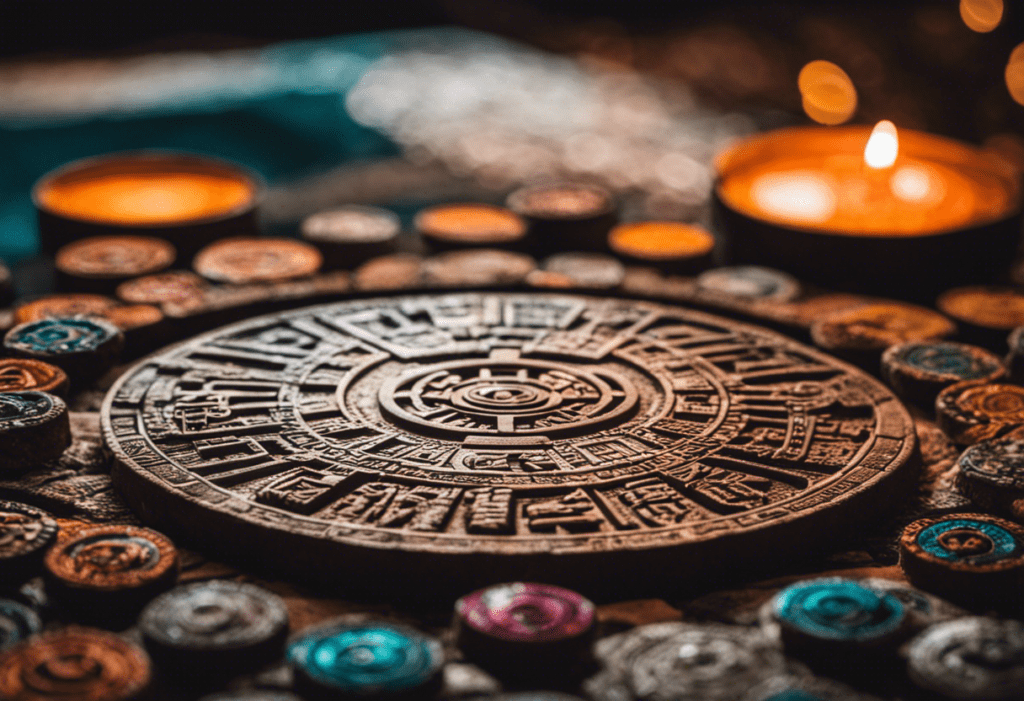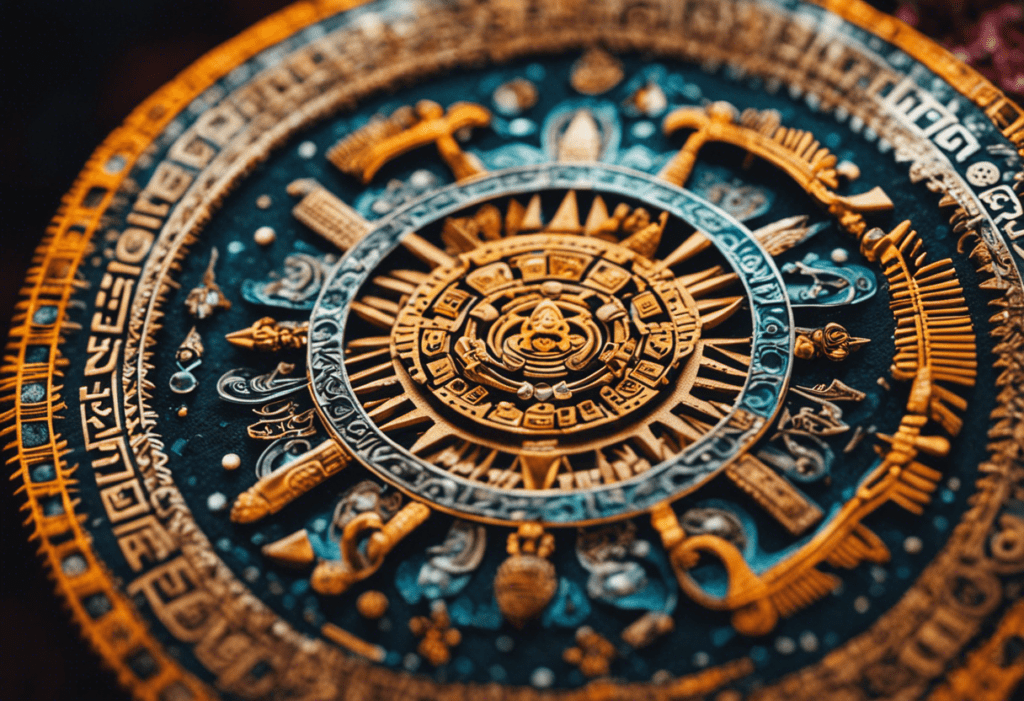The celestial dance of the cosmos wove a tapestry of time for the Aztec civilization, guiding their rituals and shaping their calendar system.
Astronomy, with its intricate observations and precise calculations, held a crucial role in the Aztec’s understanding of the universe.
This article delves into the profound influence of celestial bodies on the Aztec calendar, exploring how the intricate dance of the planets and stars shaped their cultural traditions and facilitated their predictions of celestial phenomena.
Key Takeaways
- The Aztec calendar system consisted of two main calendars: the xiuhpohualli (solar calendar) and the tonalpohualli (sacred calendar).
- Celestial bodies, such as the Sun, Moon, and other planets, held significant meaning in Aztec astronomy and were closely tied to the gods and earthly affairs.
- Astronomy played a pivotal role in shaping the Aztec calendar system, influencing agricultural activities, artistic expression, and the planning of daily activities and religious ceremonies.
- The Aztecs’ advanced understanding of astronomy allowed them to predict celestial phenomena with remarkable accuracy, contributing to their cultural and scientific achievements.
The Aztec Calendar System: An Overview


In order to understand the complexity and significance of the Aztec calendar system, it is necessary to provide an overview of its structure and components.
The Aztec calendar system was a sophisticated and intricate system that relied heavily on astronomical knowledge. It consisted of two main calendars: the xiuhpohualli, or the solar calendar, and the tonalpohualli, or the sacred calendar.
The xiuhpohualli was a 365-day solar calendar that divided the year into 18 months, each with 20 days. Additionally, there was a five-day period called nemontemi, which was considered to be a time of bad luck. The xiuhpohualli was primarily used for agricultural and administrative purposes, as it helped determine the appropriate times for planting and harvesting crops.
On the other hand, the tonalpohualli was a 260-day sacred calendar that was used for divination and religious ceremonies. It consisted of 20 day signs and 13 numbers, which were combined to create a unique day name for each day of the calendar cycle. This calendar was believed to have a direct influence on human destiny and played a crucial role in Aztec religious practices.
Celestial Bodies and Their Significance in Aztec Astronomy


The study of Aztec astronomy reveals the remarkable ways in which celestial bodies influenced and shaped the Aztec calendar system. The Aztecs believed that celestial events held significant meaning and were closely tied to the gods and their influence on earthly affairs. Aztec astronomers meticulously observed and recorded the movements of celestial bodies, such as the Sun, Moon, and planets, to gain astronomical knowledge and understand the cyclical nature of time.
One of the most important celestial bodies in Aztec astronomy was the Sun. Its daily rise and fall marked the passage of time, and its position in the sky determined the seasons and agricultural activities. The Aztecs celebrated the solstices and equinoxes, which marked important agricultural events and were associated with specific gods and rituals. They also recognized the significance of solar eclipses, which were seen as an ominous event and required specific rituals to appease the gods.
The Moon was another celestial body of great importance to the Aztecs. Its phases were carefully observed and incorporated into the calendar system. The lunar cycle, which lasts approximately 29.5 days, played a crucial role in determining the timing of religious festivals and agricultural activities. The Aztecs believed that the Moon was a deity and its movements influenced human behavior and emotions.
In addition to the Sun and Moon, the Aztecs also had knowledge of other celestial bodies, such as the planets Venus, Mars, Mercury, Jupiter, and Saturn. These planets were associated with different gods and were believed to have a direct influence on human affairs. The Aztecs observed and recorded the movements of these planets, which helped them predict celestial events and interpret their significance.
Tracking Time: How Astronomy Shaped Aztec Calendars
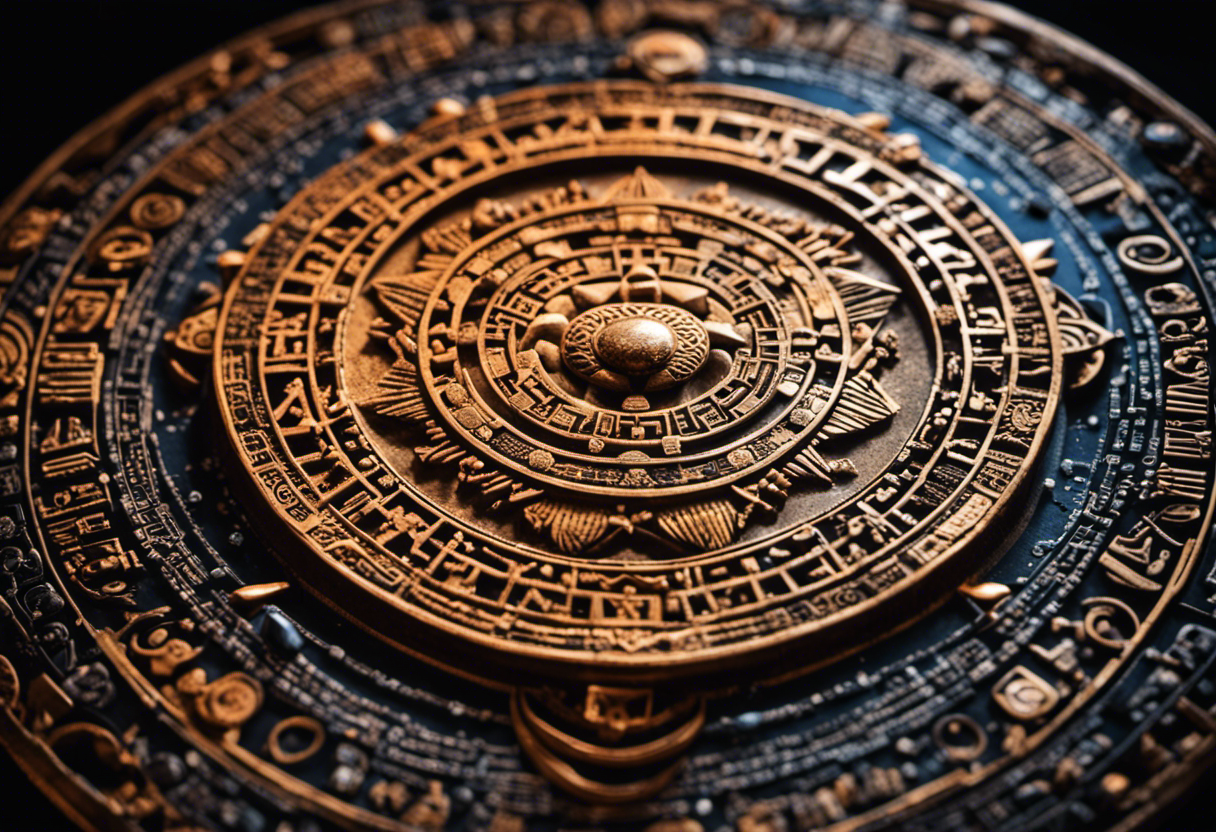

Remarkably, the intricate knowledge of celestial movements acquired through astronomy played a pivotal role in shaping the Aztec calendar system and its accurate tracking of time. The Aztecs, who were highly skilled astronomers, recognized the close connection between astronomical events and their agricultural practices. By observing celestial bodies such as the sun, moon, and stars, the Aztecs were able to determine the optimal times for planting, harvesting, and other agricultural activities. This knowledge was crucial for their survival and success as an agricultural society.
Furthermore, astronomy also had a profound influence on the artistic expression of the Aztecs. Astronomical symbolism can be found in various forms of Aztec art, including sculptures, murals, and codices. The Aztecs believed that the movements of celestial bodies were intricately connected to their gods and played a significant role in their religious practices. Consequently, astronomical symbols were often incorporated into their artwork to depict important celestial events or to symbolize the gods associated with them.
The Aztec calendar system, known as the tonalpohualli and the xiuhpohualli, was based on the careful observation and interpretation of astronomical phenomena. It consisted of two interlocking calendars that allowed the Aztecs to track time accurately and plan their daily activities, religious ceremonies, and agricultural practices accordingly. The tonalpohualli was a 260-day ritual calendar, while the xiuhpohualli was a 365-day solar calendar. Together, these calendars provided the Aztecs with a comprehensive understanding of time and its connection to the celestial realm.
Predicting Celestial Phenomena: The Aztec’s Astronomical Observations


Astronomical observations and meticulous record-keeping allowed the Aztecs to predict celestial phenomena with remarkable accuracy. Their deep understanding of the night sky and the celestial bodies enabled them to develop an intricate system of aztec astrology that played a significant role in their daily lives and religious practices.
The Aztecs possessed a vast knowledge of astronomy, which they used to predict celestial events such as eclipses, planetary movements, and the solstices. By observing the patterns of the stars, they were able to accurately determine when these phenomena would occur. The Aztecs’ astronomical knowledge was crucial in the development of their calendar system, as it allowed them to align their religious ceremonies and agricultural activities with celestial events.
The accuracy of the Aztecs’ predictions can be attributed to their meticulous record-keeping. They kept detailed records of their astronomical observations, noting the positions and movements of the stars and planets. These records were passed down through generations, allowing the Aztecs to refine their predictions over time.
The Aztecs’ ability to predict celestial phenomena not only demonstrated their advanced understanding of astronomy but also served practical purposes. By knowing when eclipses would occur, for example, the Aztecs could prepare for the potential disruption of their agricultural activities and plan their religious ceremonies accordingly.
Rituals and Festivals: The Influence of Astronomy in Aztec Culture
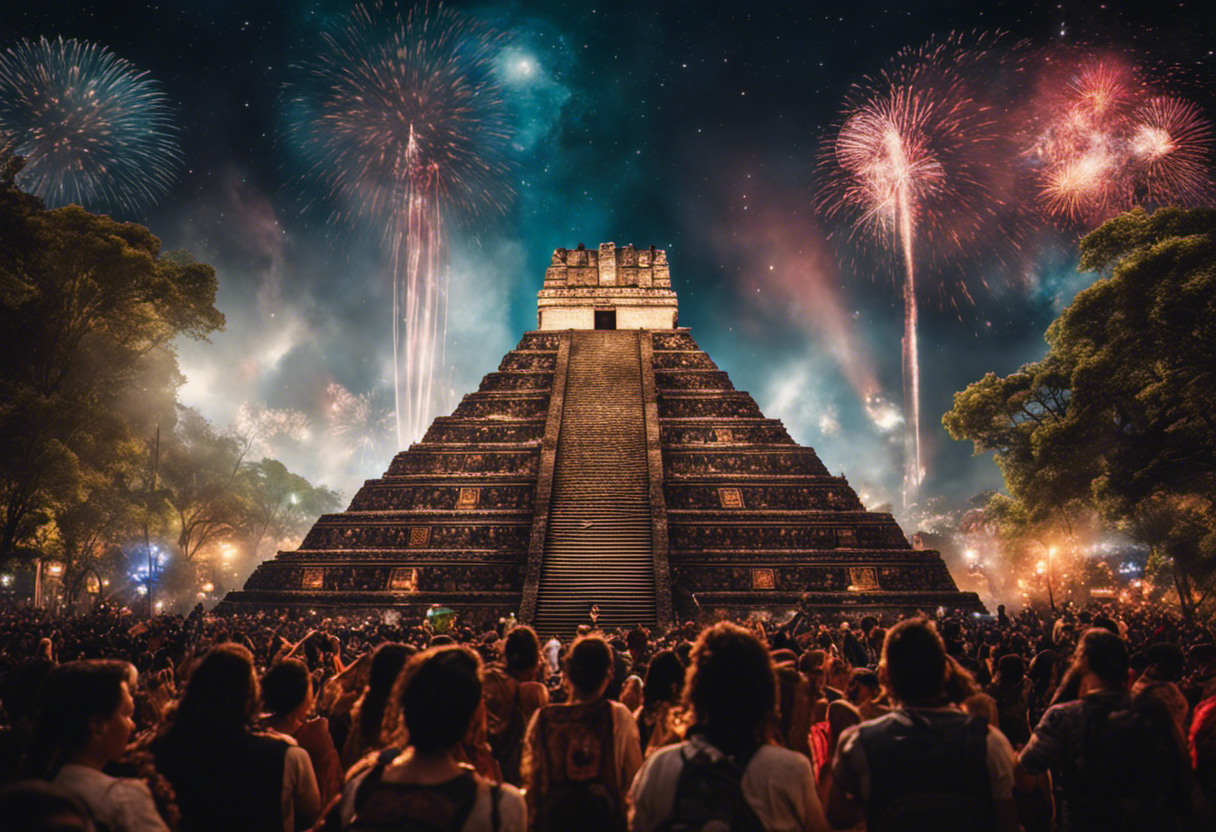

How did the influence of astronomy shape the rituals and festivals in Aztec culture? The Aztecs integrated their astronomical knowledge into their religious practices, emphasizing the importance of celestial ceremonies and astronomical rituals. Astronomy played a vital role in determining the timing and nature of these rituals and festivals, allowing the Aztecs to establish a connection between the celestial and earthly realms.
The Aztec calendar system, based on astronomical observations, provided the framework for organizing religious events. The calendar was divided into cycles, such as the 260-day ritual calendar and the 365-day solar calendar. These cycles were aligned with astronomical phenomena, such as the movements of planets, stars, and the sun. By closely observing celestial events, the Aztecs were able to plan their rituals and festivals accordingly.
During celestial ceremonies, the Aztecs would perform rituals dedicated to specific celestial bodies or events. For example, the ritual of the New Fire Ceremony was performed every 52 years to ensure the continuation of the sun. This ceremony involved extinguishing all fires and then creating a new fire through friction. The new fire was believed to renew the energy of the sun and ensure its return.
Astronomical rituals were also conducted during eclipses. The Aztecs believed that eclipses were a sign of cosmic imbalance and potential disaster. To prevent these calamities, they performed ceremonies involving offerings, prayers, and sacrifices. These rituals aimed to restore harmony between the celestial and earthly realms.
Conclusion
In conclusion, astronomy played a pivotal role in the development and functioning of the Aztec calendar system. By observing and interpreting celestial bodies, the Aztecs were able to track time, predict celestial phenomena, and organize their rituals and festivals.
Astronomy served as a guiding force, akin to a celestial compass, navigating the Aztec civilization through the vast expanse of time and space. Its precision and analytical nature allowed the Aztecs to create a complex and sophisticated calendar system that shaped their culture and society.

